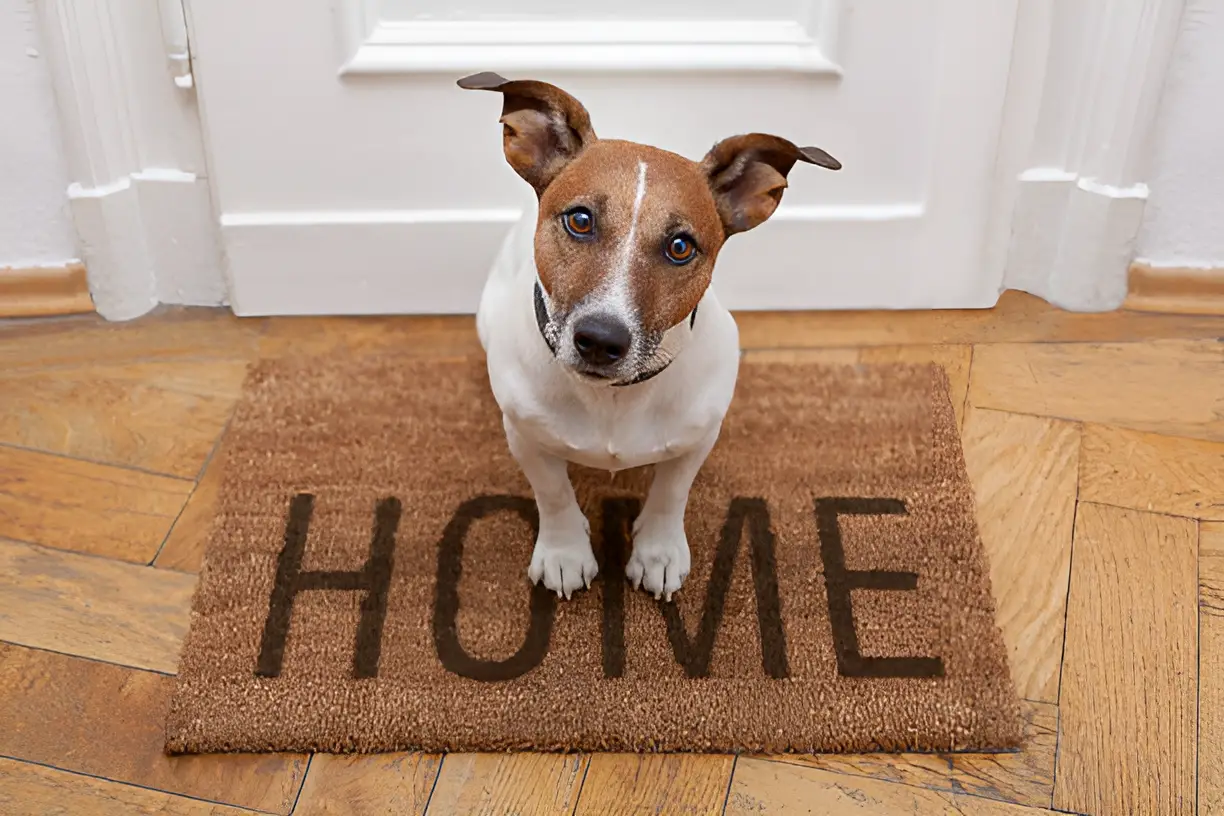Introducing dogs through a gate involves gradual exposure, positive reinforcement, and careful monitoring to ensure a smooth transition. This method helps prevent aggressive behavior and fosters a positive relationship between the dogs. Bringing a new dog into your home is an exciting but sometimes challenging experience. Proper introductions are crucial to ensure both dogs feel comfortable and safe. One effective method is to introduce them through a gate, which allows them to see and smell each other without direct contact. This article will provide a detailed guide on how to introduce dogs through a gate, including tips, recommendations, and best practices to ensure a successful introduction.
Why Use a Gate for Dog Introductions?
Using a gate for dog introductions provides a controlled environment where the dogs can get used to each other’s presence without the risk of immediate physical confrontation. This method helps reduce stress and anxiety, allowing the dogs to acclimate at their own pace.
- Safety: A gate provides a physical barrier that prevents potential fights or aggressive behavior.
- Gradual Acclimation: Dogs can see and smell each other, which helps them get used to each other’s presence gradually.
- Controlled Environment: You can monitor their behavior closely and intervene if necessary.
Preparing for the Introduction
Before introducing the dogs, it’s important to prepare both the environment and the dogs themselves. Here are some steps to take:
- Choose the Right Gate: Ensure the gate is sturdy and tall enough to prevent the dogs from jumping over.
- Neutral Territory: Set up the gate in a neutral area where neither dog feels territorial.
- Scent Exchange: Swap blankets or toys between the dogs a few days before the introduction to familiarize them with each other’s scent.
- Exercise: Make sure both dogs have had some exercise before the introduction to help reduce excess energy.
Step-by-Step Guide to Introducing Dogs Through a Gate
1. Initial Introduction: Allow the dogs to see each other through the gate. Observe their body language for signs of curiosity or aggression.
2. Positive Reinforcement: Reward both dogs with treats and praise for calm behavior. This helps create a positive association with the presence of the other dog.
3. Short Sessions: Keep the initial sessions short, gradually increasing the duration as the dogs become more comfortable.
4. Monitor Body Language: Look for signs of stress or aggression, such as growling, barking, or stiff body posture. If either dog shows these signs, separate them and try again later.
5. Gradual Progression: Once the dogs are comfortable seeing each other through the gate, you can start allowing brief, supervised interactions without the gate.
Understanding Dog Body Language
Recognizing and interpreting dog body language is crucial during the introduction process. Here are some key signs to watch for:
- Relaxed Body: A relaxed dog will have a loose, wagging tail, soft eyes, and a calm demeanor.
- Curiosity: A curious dog may approach the gate with a wagging tail and sniff the other dog.
- Aggression: Signs of aggression include growling, barking, raised hackles, and a stiff body posture.
- Fear: A fearful dog may cower, tuck its tail, or try to hide.
Tips for a Successful Introduction
- Stay Calm: Dogs can sense your emotions. Stay calm and confident to help them feel secure.
- Take Breaks: If either dog seems stressed, take a break and try again later.
- Consistency: Be consistent with your approach and use the same commands and rewards each time.
- Patience: Every dog is different. Some may take longer to acclimate than others. Be patient and give them time to adjust.
Common Challenges and Solutions
- Aggression: If one or both dogs show signs of aggression, separate them immediately and try again later. Consider seeking help from a professional dog trainer if the aggression persists.
- Fear: If a dog is fearful, try to create a more positive environment with treats and praise. Gradually increase the exposure time as the dog becomes more comfortable.
- Overexcitement: If a dog is overly excited, try to calm them down with a short walk or some playtime before the introduction.
The Role of Positive Reinforcement
Positive reinforcement is a powerful tool in dog training and introductions. By rewarding good behavior with treats, praise, and affection, you can help create a positive association with the presence of the other dog.
- Treats: Use high-value treats that your dog loves.
- Praise: Verbally praise your dog for calm and positive behavior.
- Affection: Petting and gentle touch can also reinforce good behavior.
Gradual Transition to Direct Interaction
Once the dogs are comfortable with each other through the gate, you can start transitioning to direct interaction. Here are some steps to follow:
- Supervised Interaction: Allow the dogs to interact in a neutral area while on leashes. This gives you control in case of any issues.
- Short Sessions: Keep the initial interactions short and positive.
- Increase Duration: Gradually increase the duration of the interactions as the dogs become more comfortable with each other.
- Monitor Behavior: Continue to monitor their behavior closely and intervene if necessary.
Long-Term Coexistence
After successful introductions, it’s important to continue fostering a positive relationship between the dogs. Here are some tips for long-term coexistence:
- Separate Spaces: Provide each dog with their own space where they can retreat and relax.
- Equal Attention: Give both dogs equal attention to prevent jealousy and competition.
- Regular Exercise: Ensure both dogs get regular exercise to help burn off excess energy.
- Ongoing Training: Continue with regular training sessions to reinforce good behavior.
Conclusion
Introducing dogs through a gate is an effective method to ensure a smooth and safe transition. By following the steps outlined in this guide, you can help your dogs develop a positive relationship and coexist peacefully. Remember to be patient, consistent, and attentive to their needs and behaviors.
The photo featured below the post headline is Credit: damedeeso/istockphoto
I hope you find this post helpful and informative. If Yes’ feel free to share it with your friends!
Frequently Asked Questions
How long should I keep the dogs separated by the gate?
The duration varies depending on the dogs’ behavior. Start with short sessions and gradually increase the time as they become more comfortable.
What if my dogs show aggression through the gate?
If aggression occurs, separate the dogs and try again later. Consider seeking help from a professional dog trainer if the aggression persists.
Can I use a baby gate for introductions?
Yes, a baby gate can be an effective tool for dog introductions as long as it is sturdy and tall enough to prevent the dogs from jumping over.
How can I tell if my dogs are ready for direct interaction?
Look for signs of calm and positive behavior, such as relaxed body language and curiosity. Start with supervised, short interactions and gradually increase the duration.
What should I do if one dog is fearful?
Create a positive environment with treats and praise. Gradually increase the exposure time as the dog becomes more comfortable.

